

Beany & Cecil Boards by Bruce Timm
File this under “Weird Things I’ve Accumulated Over the Years.” While cleaning out some boxes recently, I ran across photocopies of a complete 70-page storyboard from the short-lived TV series The New Adventures of Beany and Cecil (1988). It’s for the episode “The Courtship of Cecilia.” I’m pretty sure the boards are drawn by a pre-Batman Bruce Timm; any Brew readers that can confirm, please do.
I’ve posted six of the pages below. The storyboards are beautifully inked—the care that went into creating finished art for each panel makes it feel more like a comic book than the average animation storyboard. It’s not clear to me whether Timm always works this clean or if this was perhaps a one-off presentation board. It’s also worth mentioning that a few of the episodes from the revival are posted on YouTube, though unfortunately not this particular cartoon.
Update: In the comments section, Tom Minton provides a nice history on the use of inked boards in ’80s TV animation. I’m reprinting them up here so nobody misses his comments:
John Dorman’s storyboard unit at Ruby-Spears started brush inking their in-house storyboards in the early 1980’s (on the likes of stuff like “Dragon’s Lair� and “Turbo Teen�), so Bruce [Timm] didn’t invent the notion of inking production boards. The product that Bruce (and Doug McCarthy, who also inked the initial Tiny Toon Adventures boards, with a brush pen) worked on had the advantage of a lot more money going into the completed result.
Many industry veterans complained about the upstart practice of inking storyboards back in that day, arguing that it was misplaced effort to ink a board. It’s only a waste of talent when the best work gets left behind in the board phase, which routinely happened in television animation for many years, depending in varying degrees on the studio in question. It’s true that some very talented people ended up producing some beautiful work that the public never saw. At different times, Dan Riba, Alfredo Alcala and even Duncan Marjoribanks were my inkers at Ruby-Spears. Thom Enriquez and Jim Woodring inked some magnificent looking boards there, as well. Yet the finished shows done by that studio speak for themselves.
The primary point of drawing on storyboards remains communication, not stellar inking, so the act of such a degree of polish will probably continue to be debated for decades to come. Inking on boards generally owes more to having a serious comic book jones than a yen for onscreen graphic blandishment. The two disciplines are related but they’re a couple of different animals.
Update #2: Brew reader Ted has posted the short, “The Courtship of Cecilia,” onto YouTube. Watch Part 1 and Part 2. And another Brew reader has volunteered to scan in Bruce Timm’s entire storyboard for this cartoon so look for that soon.
click on pics for bigger versions
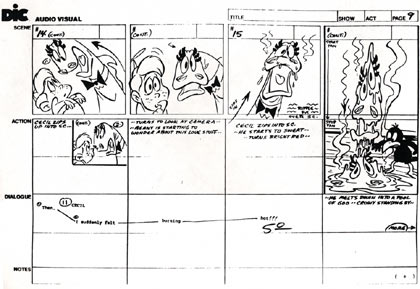
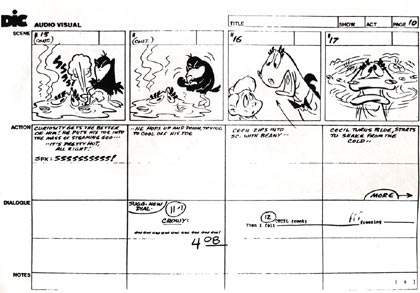
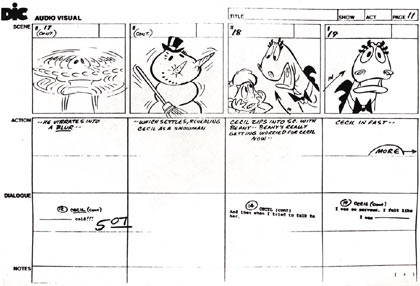
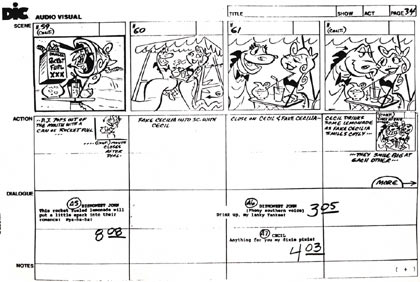
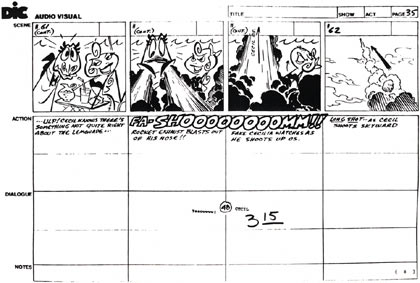
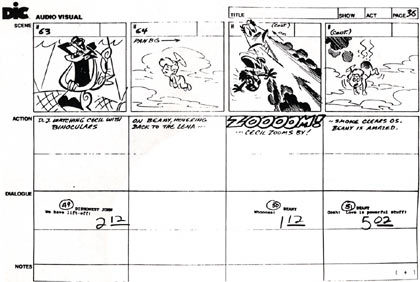

.png)